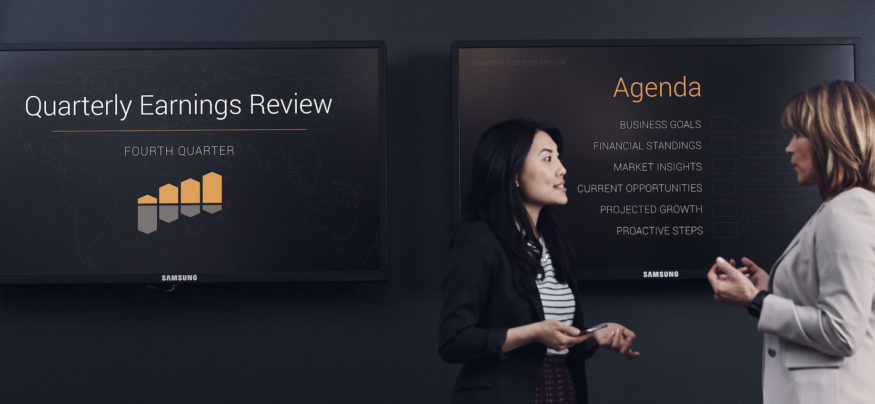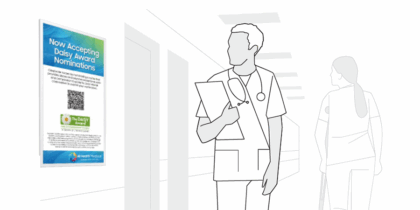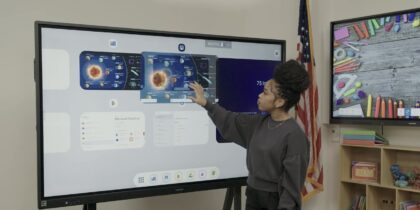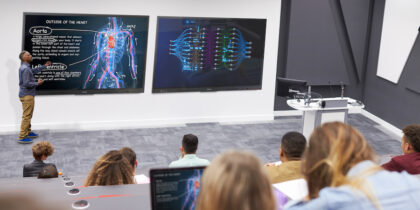There are countless articles on the web about the importance of effective corporate communications, but few discuss how the many of the workplace challenges managers face can be resolved through well-planned, timely and relevant digital signage screens and video walls.
The Society for Human Resource Management’s annual job satisfaction survey for 2016 places heavy emphasis on training, trust, job security, workplace culture and variations on the theme of employees being kept informed about what’s going on. There are also the universal business goals of streamlining operations and creating efficiencies that save time and money and lessen chaos and frustration.
At the annual InfoComm professional AV and systems integration trade show, companies like Samsung and its partners will not only be showing their latest display and related technologies, but they’ll also be demonstrating how these technologies are being used out in the marketplace. Corporate communications and workplace messaging have in recent years become hot verticals in the digital signage market because of the difference that well-placed signs, integrated data and clever content programming are making.
Digital Meeting or Conference Room Signs
We’ve all been there — wandering hallways and floors looking for a free meeting room, poking our heads into meetings and asking if this was the one we’re supposed to be in, or lurking outside an active meeting, trying to get the group inside to clear out because you have it booked. Much of the confusion around meeting rooms happens because they either don’t even have a central reservation system, or if they do, it’s only visible on computers back at employees’ desks.
Imagine how much better this process would be with small screens outside each meeting room door mapped to a central room booking system — using common software tools like Microsoft Exchange and Google Calendar — that tell staff when each room is booked or free, what the meeting is about and, in many cases, who booked the room. Some content management systems have supplemented that essential information with other capabilities, like being able to use touch to find another available room, book that one on the spot, and even order IT services to bring a needed cable or adapter, or have catering bring in coffee and snacks.
While some digital meeting room setups use consumer-grade tablets, Samsung has workplace-ready, 10-inch system on chip (SoC) Smart Signage displays that easily work with most third-party CMS software platforms. There are at least three dozen different meeting room sign management options available on the market.
Motivation and Additional Training
In highly regulated industries, workplace break room walls are filled with posters with state regulations, not necessarily in the first language of many of the workers. Digital signs can consolidate all of that content, and also use touch or triggers to offer additional language options. They can also run targeted content to make workers aware of important information and encourage them to read material that might otherwise be ignored.
Interactive displays also enable on-the-spot training and awareness programs, allowing new staff to get first-time or refresher video tutorials on equipment usage or workplace processes.
At some innovative workplaces, such as the headquarters of online retailer Blinds.com, Samsung displays and Signagelive software are being used to motivate staff with fun videos that blend staff sales and contact center performance data with pro football player-style graphics.
Visual Representations of Data
Large displays and video walls are being used both front and back of house — from corporate lobbies to manufacturing and logistics floors — to visually represent key performance indicators. Tied into archival or real-time data from systems like logistics or ERP, screens can powerfully illustrate visual dashboards.
Front-of-house visualizations, for example, can use charts and other visuals to show how the building and company are performing on energy conservation and management, or can even tie in Internet of Things sensors to convey information such as soil conditions and production yields for an agribusiness.
Back-of-house visualizations can tie into real-time systems to illustrate the productivity of machines and people on large screens, and even “gamify” production levels so that teams from different manufacturing facilities can compete to be the highest performers.
With communications so important to thriving companies and workplaces, digital signage is an essential component.
Looking to use new technology to boost employee communication and engagement? Find the digital signage solution that works for your business here.







